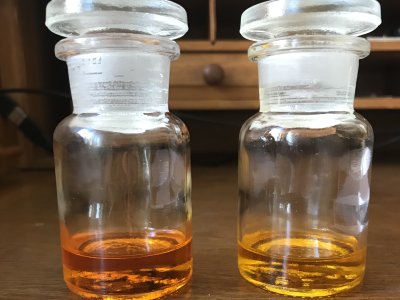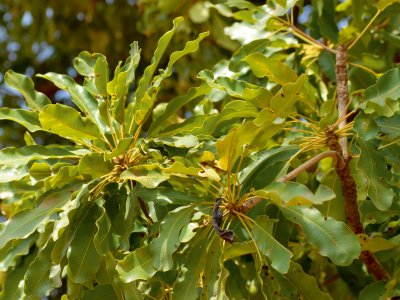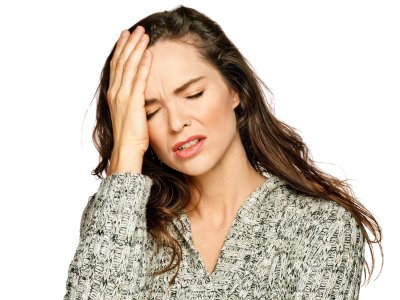The Chemistry of Essential Oils Made Simple

The Chemistry of Essential Oils Made Simple
By David Stewart
Reviewed by Robert Tisserand
Review first published on August 24th 2012:
http://roberttisserand.com/2012/08/book-review-the-chemistry-of-essential-oils-made-simple/
At almost 850 pages, there's plenty of reading here. Unfortunately, this book is replete with errors. There are innumerable mis-spellings of the names of chemicals. Terpinen-4-ol is an alcohol, not a phenol, and bergamotene is a terpene, not a furanocoumarin. On page 374 we read that Coumarins are thought to be antispasmodic, as are many other esters. Coumarin is not an ester. Stewart mentions that myrrh oil is rich in "furanoid compounds“ well yes, it is indeed rich in FURANS, and he goes on to say that furanoid compounds can amplify ultraviolet light and can make an oil phototoxic. (p23/24). Well, I don't know why he wants myrrh oil to be phototoxic, but it isnt, because it contains no FURANOCOUMARINS. Using the term furanoid compounds fails to make a vital distinction between (phototoxic) furanocoumarins, and (non-phototoxic) furans.
In some cases Stewart seems to have copied mistakes from other sources, without realizing they were mistakes. l-Limonene is quite often given instead of d-limonene, and methyleugenol has curiously disappeared as an essential oil constituent altogether. Stewart does not list it a constituent of any of the oils it is actually found in! Furanocoumarins are frequently cited that may indeed be present in the plant but are not found in the essential oil.
He has made a valiant effort to list the components of 113 essential oils, but the method he used combining data from various books is risky. The end result is said to represent a "typical essential oil", but is rather hit-and-miss, and in many cases does not represent any existing essential oil at all. Some of the total percentages add up to more than 100%. Reporting constituent chemistry from different sources is a challenge I am often confronted with myself, but there are more elegant solutions.
Stewart is highly critical of what he calls the "British School" of aromatherapy, because it espouses the idea that some essential oils can be dangerous, and because, according to Stewart, it relies on scientific research on animals. However, he does take on board the idea that some furanocoumarins are phototoxic. Stewart perhaps does not realize that phototoxicity in essential oils is almost entirely based on RIFM research using pigs, and much of the French information about essential oil constituents that Stewart cites is based on animal research. If the book was properly referenced, this would be obvious. He also criticizes the British for usually applying only certain compounds isolated from essential oils rather than the whole oil. (p4) It is difficult to fathom from where he plucked this outrageous notion!
There is a massive amount of information here, but there is not a single scientific reference to back up any of it. The result is an uncomfortable mix of fact and fiction. The book perpetuates the myth that any dangers of essential oils (apart from phototoxicity) only apply to what he calls "perfume grade oils", which, according to Stewart, British aromatherapists like to use! I'm not sure then, who buys all the independently certified organic essential oils sold in Britain. There is no perfume grade of essential oil (on either side of the Atlantic), nor is there a therapeutic grade. The grades that do exist are various organic certifications, ISO standards, BP (British Pharmacopeia) standards, and FCC (Food Chemicals Codex) standards.
Stewart does humanity and science a disservice by alleging that "it is impossible for an essential oil to cause an allergic reaction: Occasionally, a person receiving essential oils claims to have had allergic reaction to them-such a reaction is never allergenic-they are usually therapeutic and indicate the initiation of a cleansing, healing process". (p451) Stewart goes on to explain his hypothesis that essential oil constituents cannot be allergenic, because they are not composed of amino acids. No, they are not composed of amino acids, but yes, they can in fact cause allergic reactions, because an essential oil constituent such as cinnamaldehyde (known as a 'hapten') can combine with proteins in the skin and can then be recognized by the immune system as an allergen. This is not new science, and Stewart's bending of the facts to suit his world view is shameful and potentially dangerous.
There is a lot of information in this book and it is by no means all wrong, but the fact-to-error ratio is too rich for me, and the way he plays with words to make his truth look like fact is disturbing. On page 462 he states: "There has never been a documented instance of antigen-antibody response (i.e. sensitization) to an essential oil. Essential oil antibodies have never been found or detected in anyone. Never". The last part is true, but only because (a) you can't have an antibody to an essential oil, only an essential oil constituent (is this genuine ignorance of basic biology, or just more fact-bending?), and (b) no scientist has ever found antibodies to essential oil constituents, because no scientist has ever looked for them. Perhaps the clinical reality of an allergic reaction needs no proof. Here are two documented cases of allergic reaction to cinnamon bark oil:
Ackermann L, Aalto-Korte K, Jolanki R et al 2009 Occupational allergic contact dermatitis from cinnamon including one case from airborne exposure. Contact Dermatitis 60:96-99
S¡nchez-Prez J, Garc-a-D-z A 1999 Occupational allergic contact dermatitis from eugenol, oil of cinnamon and oil of cloves in a physiotherapist. Contact Dermatitis 41:346-347
The IFRA safety standards require that cinnamon bark oil should not be used on the skin at more than 0.6%, to avoid allergic reactions.
Essential Oil Safety a rebuttal.
Stewart is critical of my book, Essential Oil Safety. Here are some of his comments:
Much of the research cited is on the toxic effects of single components of an oil, which is an invalid application of science. This is an incredible statement, considering that most of Stewart's book is devoted to explaining essential oil chemistry, and the relationships between constituents and therapeutic properties. On page 468, for instance, Stewart says: "essential oils rich in phenols should be used with caution when applying to the skin". If extrapolating single component data to whole essential oils is not OK when I do it, why is it OK when Stewart does it?
Furthermore, as the authors point out, in all of the studies they cite, the data are for animals (not people) and/or the tests were not for the whole oil but for isolated compounds of an oil. These types of studies are not valid indicators of the behavior of oils in actual practice. (p21/22) This is simply not true, and is not stated anywhere in the Essential Oil Safety text. There are many studies cited in Essential Oil Safety where whole essential oils were patch-tested on individuals (such as the two reports for cinnamon above), and there are many cited cases of poisoning from whole essential oils. And, see my previous comment.
There are two places where I have been mis-quoted:
1) In the preface the authors state "this text was largely an extrapolation of toxicological reports from the Research Institute for Fragrance Materials (RIFM)". In other words, this book is based on data that apply only to perfume grade oils which are customarily refined, denatured, and laced with synthetics. (p787)
This is what the preface actually says:
This book [i.e. Essential Oil Safety] replaces The Essential Oil Safety Data Manual by Robert Tisserand, first published in 1985. This text was largely an extrapolation of toxicological reports from the Research Institute for Fragrance Materials (RIFM). So , I was not referring to Essential Oil Safety at all, I was referring to a previous, and very much smaller book.
2) These authors state on p ix, "the majority of essential oils we recommend should not be available to the general public". In their opinion, the majority of essential oils should be restricted only to what they would regard as "qualified aromatherapists". (p788)
This is what is actually said:
In the UK and USA at least, it is currently possible to purchase, by mail order, the majority of the essential oils which we recommend should not be available to the general public. Stewart is trying to make it sound as if I don't believe essential oils should be available to the general public. Of the 450 odd essential oils produced today, I do believe that a dozen or so should not be publicly sold, because they are so toxic. To suggest that I am not in favor of ordinary people having access to essential oils is just incredible. David Stewart, what do you think I have been doing for the past 40 years? Why is there a brand of essential oils called Tisserand Aromatherapy? Why are these essential oils available to anyone? Why did I write The Art of Aromatherapy in 1977? And what was I thinking when I wrote a book called Aromatherapy for Everyone in 1988?
In both cases, by omitting the first part of the sentence, the meaning has been completely changed. And in the second quote, two words were omitted to further change the meaning. It's sad that someone should invest so much energy in writing a comprehensive text, and then sabotage it by trying to bend the truth to suit a commercial agenda. (And if there is no commercial agenda, why are Young Living products mentioned throughout the book?)
Copyright. Robert Tisserand
Source of this file: www.aromamedical.org


